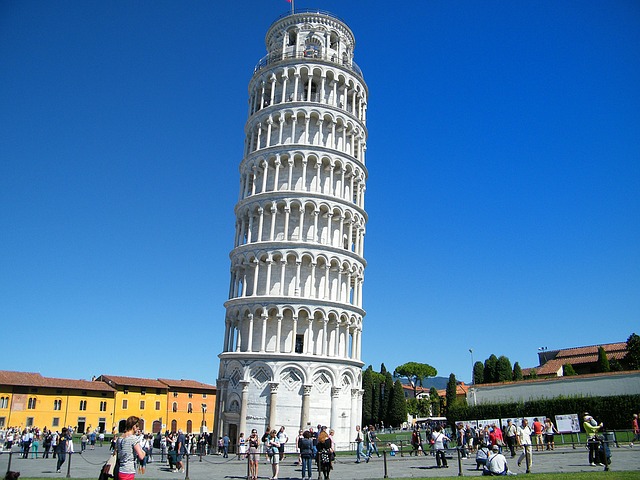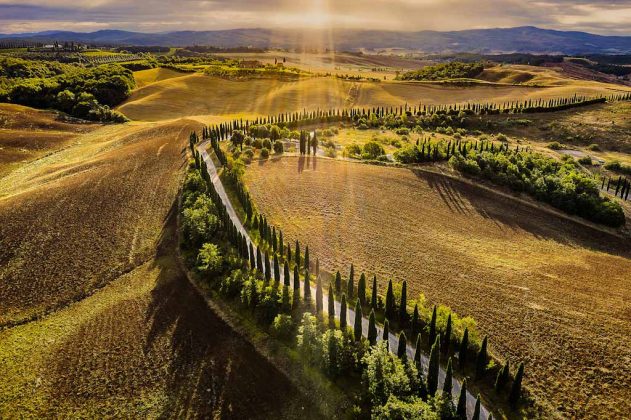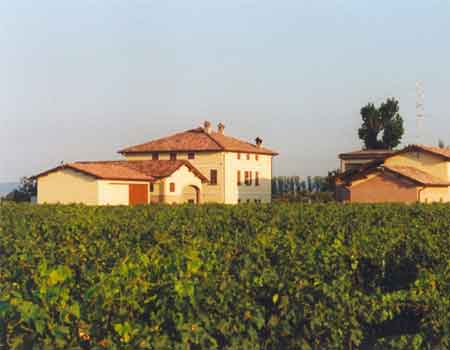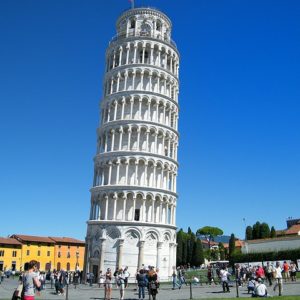Description
The Ceramics Museum of Montelupo –
THE MUSEUM OF CERAMICS
THE CONSTRUCTION OF A MUSEUM OF CERAMICS IN MONTELUPO WAS ALREADY IN THE WORKS AFTER THE WAR. IN FACT, THE 1946 RECONSTRUCTION PLAN ENVISAGED THE CONSTRUCTION OF A BUILDING THAT WAS TO HOUSE IT. BUT IT WAS ONLY IN THE EARLY 1970S THAT THE FOUNDATIONS WERE LAID FOR THE CREATION OF THE MUSEUM.
IT ALL STARTED FROM A WELL
In 1973, in fact, during the paving works of an ancient road of the castle of Montelupo, an ancient well was found, baptized the washhouse well. Used as a landfill for the nearby kilns, the sink well turned out to be a large archaeological deposit that collected evidence of the productions.
Its stratigraphy proved to be very useful and reliable in reconstructing the productive events of Montelupo. After the discovery, it was the Archaeological Superintendence of Tuscany that conducted the research campaigns which, in the two-year period 1975-76, thanks to patient restoration work on the materials found, produced about 300 ceramic specimens attributable to the first quarter of 1500.
These first materials were the nucleus of a first important exhibition that was held in Montelupo in the summer of 1977, in the premises of the then E. Corradini elementary school, which in 2008 will become the current seat of the Museum. In that period the Archaeological Group of Montelupo was born and consolidated, a group of volunteers who extended their research activity to the entire urban area of Montelupo. The recovery and subsequent restoration of the materials made it possible to reconstruct the activity of our potters from the fourteenth to the nineteenth century.
The municipal administration of Montelupo worked hard to give a prestigious seat to the archaeological heritage that was being formed, finally deciding to transform the town hall itself, the historic Palazzo del Podestà, into a museum.
THE ROSSO DI MONTELUPO
A masterpiece of Italian Renaissance majolica: a basin of extraordinary chromatic and decorative richness dated 1509. Its particular name is a red pigment used in the decoration, the composition of which still remains a mystery today.
FROM PARIS TO MONTELUPO
Majolica was part of the Gustave de Rothschild collection in Paris, and later belonged to the French antique dealer and collector Alain Moatti. It was then purchased and donated to the Museum by the Municipality of Montelupo Fiorentino and by private sponsors, including the most important ceramic factories in the area.
THE MONTELUPO CERAMICS MUSEUM COLLECTS THE EVIDENCE OF THE CERAMIC PRODUCTION OF THE PLACE WHICH SINCE THE 13TH CENTURY WAS ONE OF THE MOST IMPORTANT FACTORY CENTERS NOT ONLY IN ITALY, BUT IN THE ENTIRE MEDITERRANEAN BASIN.
PATH
The Museum of Ceramics boasts a museum itinerary that is divided into two floors. It includes a collection of ceramic works ranging from the end of the thirteenth century to the eighteenth century, chosen from the more than 5,550 contained in the warehouses.
The corridors of both floors offer a chronological reconstruction of the history of ceramic art and a path for the blind with tactile tiles and Braille alphabet captions.
The eight rooms, on the other hand, deal with eight specific themes: the medieval and Renaissance canteen, excavations, the shop, collecting, exports, clients, the pharmacy and the room of animals and flowers, entirely dedicated to children.
The museum also has a path for children with interactive activities suitable for all ages. Also part of the collection are some majolicas resulting from donations or acquisitions. An example is the famous Rosso di Montelupo (exhibited in the room dedicated to collecting), a basin dated 1509 already in the Rothschild collection in Paris decorated with grotesques on a yellow and red background, which takes its name from the particular red pigment used in the decoration, the whose composition is still a mystery today.
THE MAGNIFICENT DOZEN
THE PIECES THAT ARE WORTH THE VISIT
Among the hundreds of majolicas that make up the heritage of the Montelupo Ceramics Museum, it is not easy to point out the artifacts that, on their own, can be worth a visit.
It is not even easy to choose the criteria on which to base the selection, so much so that, in the end, our magnificent dozen represents a collection of pieces whose choice was based not only on aesthetic canons , but also on the composition of the decorations, the motifs represented, the symbolism , and, last but not least, the experience of those who made the choice, in which the memories linked to the discovery and the many hours of work used to recompose and restore each single find have a weight.
The thirteenth majolica to be mentioned would naturally be the absolute masterpiece produced in the Montelupine furnaces, a basin known as the Rosso di Montelupo but since the majolica is now very well known, we have preferred to indicate less known pieces. Furthermore, we have deliberately left out the majolica that the museum exhibits in the room dedicated to masterpieces, in which Rosso naturally has a prominent place, and which give a precise image of the quality of the work of the Montelupine potters.

MUG WITH HARPY
Archaic majolica Well of the wash-houses 1320-40
The mug is presented in the classic form for this period, with a narrow belly and elongated neck, saving enamelling, decoration made in copper green and manganese brown according to the canons of the time.
The choice of the potter to represent a harpy on the mug, a mythical animal half woman and half bird, goes beyond the normal decorative canons that provided for the use of geometric or vegetable motifs or heraldic or pseudo-heraldic coats of arms. The potter’s skill can be seen in the fact that in order to be able to properly proportion the design by filling the entire height of the jug, he folded the head of the harpy in an unnatural knot, making it rest on the folded wings.

“RIBBON” PLATE WITH RAMPANT LION
From excavation of the Scatragli furnace 1490-1510
A fine example of a composition typical of the end of the 15th century, which, while still following the canons of the archaic and damask, shows the first attempts to break free from this style. The brim of the plate decorated with an elegant ribbon frames a rampant lion (symbol of strength, virtue and prudence) ”which is suspended on a background filled with blue lines and dark dots.

PEACOCK FEATHER EYE PLATE
From the well of the wash houses 1500-10
A decorative composition that is a true explosion of colors.
The decoration called the eye of the peacock feather is one of those that can be found on majolica from all over central Italy, but this majolica enhances the skill of the Montelupine potters and highlights their distinctive characteristics.

MONOCHROME DAMASK BASIN
From the excavation of Casa Sinibaldi 1440-60
A small basin, decorated according to the canons of damask, with a central figure inserted in the space left free by the geometric or plant motifs that fill the surface.
Unusual in shape, its perforated edge almost perpendicular to the brim does not find many comparisons, and for the decoration, a moon that almost entirely overlaps the circle of the sun.
Sun and moon are very strong symbolic elements, just think that they appear, opposed, in some representations of the crucifixion.
In our plate, the overlap of the two discs, with the moon leaving only a wedge to the sun, seems to represent an eclipse, and if so, this perhaps becomes the only representation of this astronomical event on majolica.

BOWL WITH ORIENTAL KNOT
Well of the wash-houses 1515-25
A bowl decorated with a geometric pattern, using only blue on a particularly white and shiny glaze.
A decoration with an interweaving in the center that branches into four parts and fills the ricasco of the bowl with four other interweaving in the middle part and eight interweaving in the part closest to the edge, made with perfect symmetry. The small flowers used to fill the spaces between one weave and the other, refer to the motifs of the porcelain that, coming from China, could already be seen in the homes of Florentine nobles.
To admire the painstaking work of the ceramist who scratched every single blue thread with a very fine point to obtain a white stripe that lightens the entire composition.

PLATE WITH OVALS AND RHOMBUSES
Well of the Lavatoi 1500-10
This is one of the most typical productions of Montelupine furnaces. The plate has a band of ovals on the brim in which a rhombus is inserted, and in the center a tricolor chessboard, in which rows of green and white chess pieces alternate with rows made in red and white. This type of dishes has had a huge spread. Fragments of these artifacts have been found in archaeological excavations conducted in the Mediterranean area and on the Atlantic coasts of Europe.
Recently we have had confirmation that Montelupine dishes with oval and rhombus have been found in Cuba and on the coasts of Virginia.
PISA –


















